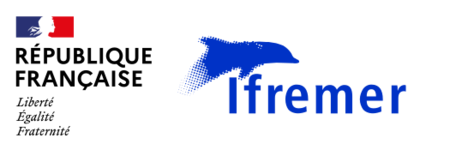Counting fish: a complex endeavor for European scientists
Fish populations’ status and demographics must be determined before setting fishing quotas for different European Union countries.
It’s easy to count the trees in a forest—but less easy to count fish in bodies of water. The process requires complex calculations and the expertise of fisheries science specialists from the EU and neighboring countries. Fish live out their lives from birth to adulthood with no regard for borders. Therefore, data must be pooled at the international level to perform the most accurate calculations and ensure sustainable management of fisheries resources.
Data collection
The first step of the process could be described as “data fishing”. Els Torreele, a researcher at the Flanders Research Institute for Agriculture, Fisheries and Food (ILVO, based in Belgium) and an expert member of the International Council for the Exploration of the Sea (ICES), describes it like this: “Everything starts at the national level. Each member state of the EU collects information about the managed populations through two main sources, one commercial and the other scientific: fishing boats and research vessels that conduct regular surveys of fish abundance in the main national and international fishing areas.” The quantities of fish captured and brought to shore by fishermen are recorded. A network of observers, either on board or at the fish auction, documents biological characteristics as well (age, size, sex, and weight of the fish). Their age is determined through study of their otoliths (small bones in the inner ear whose ridges make it possible to evaluate the age of individual fish). Furthermore, during oceanographic cruises, fish populations are sampled with standardized fishing nets. The fish captured are measured and their age is determined as well. All of this data yields a snapshot of the age distribution of captured fish.
Expert perspectives thanks to European scientific cooperation
Once data has been collected by each country’s research institutes, the second step is to transfer it to intergovernmental scientific organizations. These organizations, staffed by fisheries experts from all countries involved in fisheries management, produce models that help establish diagnoses of resource status and projections for the future. They include, among others, the International Council for the Exploration of the Sea (ICES), which covers the northeast Atlantic and the Baltic Sea, and in the Mediterranean, the General Fisheries Commission for the Mediterranean (GFCM) and the Scientific, Technical and Economic Committee for Fisheries (STECF) of the European Commission. Scientists use this information to estimate mortality due to fishing and also the biomass of adult fish of reproductive age, to ensure that populations will be able to replenish themselves. Scientific recommendations are drawn up on the basis of these evaluations.
Key figures:
- About 30 oceanographic cruises ranging from the Baltic Sea to the Mediterranean
- 150 populations tracked in Europe
- Almost 6000 scientists from 700 marine science institutes in 20 EU member states (and beyond)
- Over 2500 scientists participating in work by the International Council for the Exploration of the Sea (ICES), an organization founded in 1902
- 230 expert groups
After scientific recommendations come political decisions
These scientific recommendations are communicated directly to the EU as well as to the other relevant countries (Norway, Iceland, the UK, Albania, Montenegro, Turkey, etc.). Here a more political chapter begins, since they affect decisions concerning total allowable catches (TAC). In Europe, these decisions are made by the EU Agriculture and Fisheries Council and then translated into fishing quotas for each country. Fisheries scientists also work together to provide other key analyses; for example, of “bycatch” (species or sizes of fish that are captured despite not being targeted), of fishing’s impact on seabeds, and on other subjects to give the fullest possible picture of fishing activities and their consequences.
